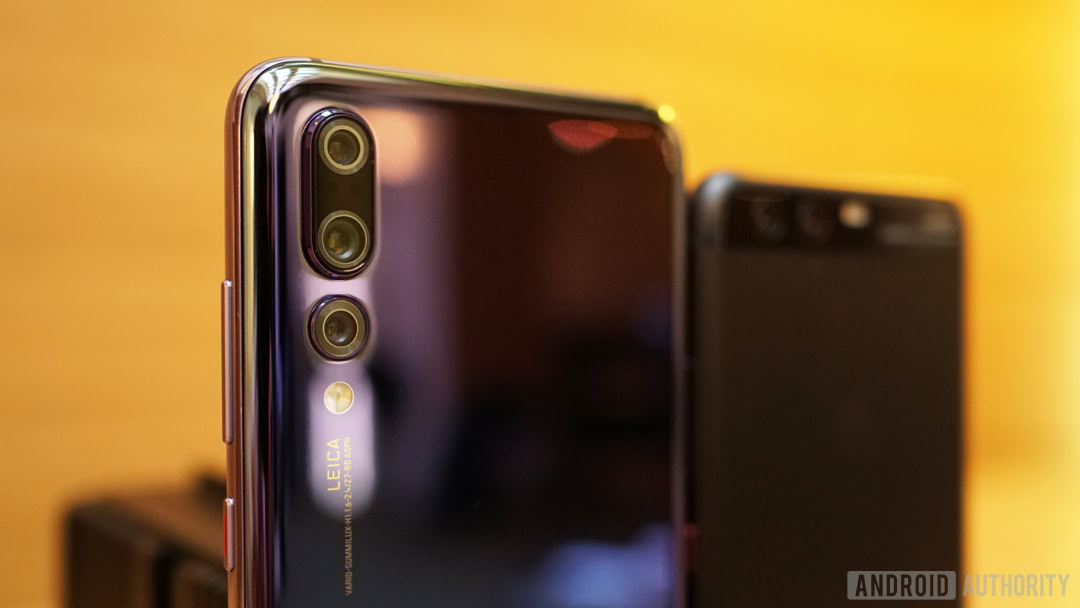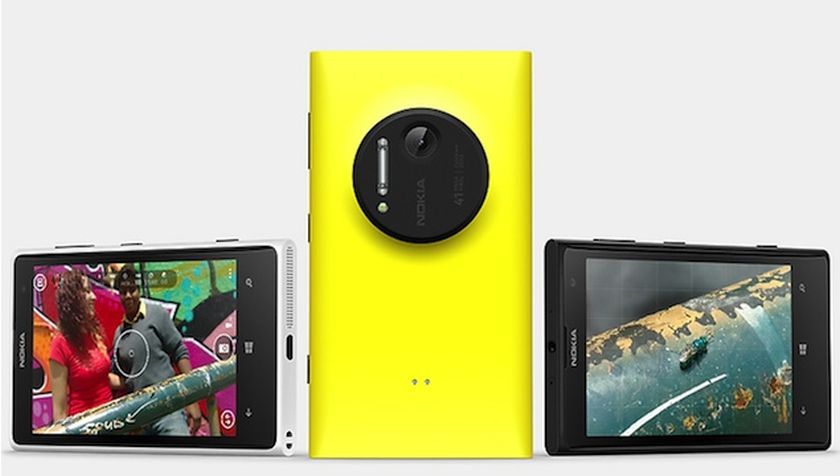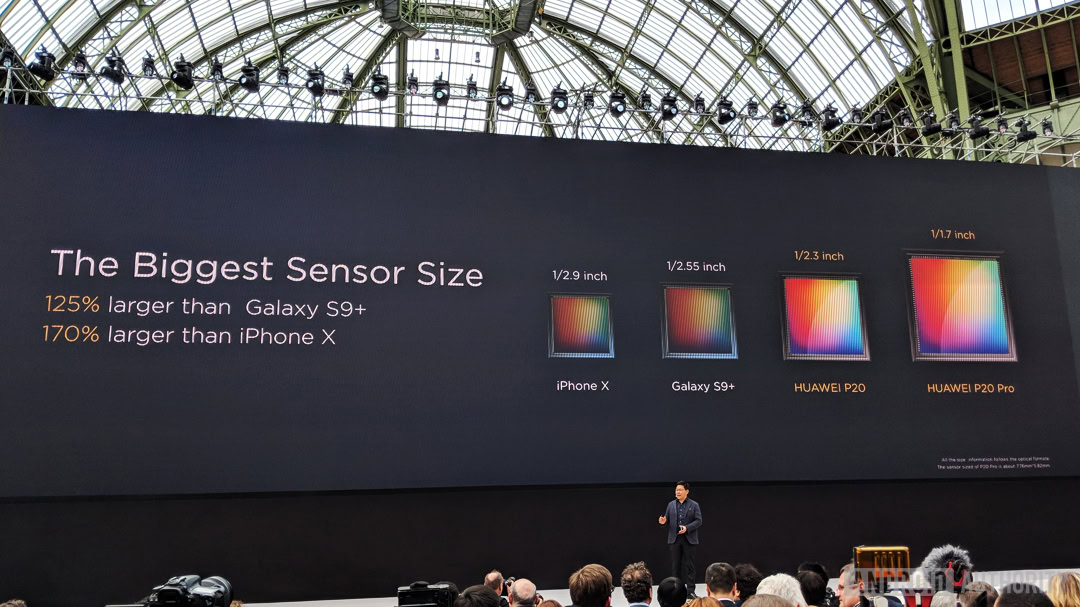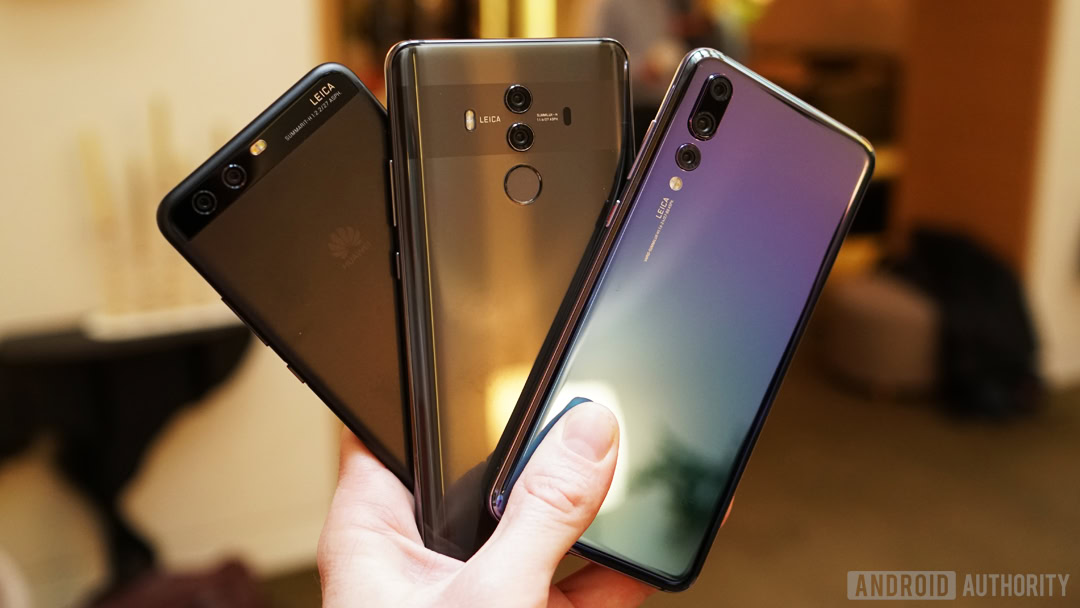Affiliate links on Android Authority may earn us a commission. Learn more.
HUAWEI P20 Pro: too much of a good thing?

When HTCintroduced the first modern dual-camera smartphone with the One M8 in 2014, little did we know it would only take four years before we got the world’s first triple-camera smartphone. To some, the position we now find ourselves in must seem inevitable, because of course we were always going to end up with a triple-camera phone. But to others, the very thought of a smartphone with three cameras on the back must sound absurd. Now that we have three, is it only a matter of time until we get four? Can there be too much of a good thing when it comes to smartphone cameras? And how did we get to this point?
Reality check
First, some basics. As with previous HUAWEI phones, there’s a main RGB sensor and a secondary monochrome sensor on the P20 Pro. While that monochrome sensor can be used for shooting lovely B&W photos, its primary function is picking up additional detail to improve the color photos taken by the main camera. The P20 Pro also adds a telephoto lens that offers 3x optical zoom and, combined with the other lenses, supports 5x hybrid zoom with very little loss of detail. So far so good.
While much can be made of the P20 Pro being the world’s first triple-camera smartphone, there’s nothing particularly revolutionary going on in terms of tech, at least when it comes to hardware. It’s all stuff we’ve seen before, just in one pocket-sized package.

Everything old is new again
HUAWEI is marketing the 40MP RGB sensor because we all know bigger numbers sell phones. But there are a few caveats that need to be understood. By default, the P20 Pro is set to shoot 10MP photos. Why? Because the two micron pixels HUAWEI is sprucing are actually four one micron pixels combined. Sound familiar? It should, because it’s the same thing Nokia did with Pure View back on the Nokia 808. More recently, OnePlus did it with the OnePlus 5T via what it calls Intelligent Pixel Technology.
HUAWEI is marketing the 40MP RGB sensor because we all know bigger numbers sell phones.
HUAWEI calls its “innovation” Light Fusion Technology but they’re all just variations on the same oversampling process with different fancy names.
The idea is simple. Because individual pixels are limited as to how much light they can absorb, there are three main options available: increase the size of the pixel and have fewer pixels on the sensor, which is what HTCdid with UltraPixel; increase the size of both individual pixels and the sensor on which they’re found; or combine the information from multiple adjacent pixels into one larger pixel on a regularly sized sensor. This is oversampling (also referred to as pixel binning, although pixel binning occurs before demosaicing and oversampling occurs after – I don’t know enough about the P20 Pro camera yet to know which it uses, but we’ll update this post as we learn more). Update: HUAWEI got back to us: “There is pixel binning at a very deep level, resulting in a standard Bayer layout with two green pixels, one blue pixel and one red pixel, all joining to make one single larger pixel. This is accomplished through co-engineering between HUAWEI and Leica.”

Within the space constraints of a smartphone, endlessly scaling up sensor sizes on which to cram bigger pixels is a battle of diminishing returns. But it’s an easy enough process to bundle smaller pixels together so you get four times as much light in the larger combined “pixel” than you would with each individual one. Indeed, HUAWEI says exactly this about the P20 Pro.
But HUAWEI has also increased the physical size of the sensor as well. The P20 Pro has a 1/1.7-inch sensor, which is the same size as that found on some pocket digital point-and-shoot cameras. It’s also much larger than the sensor found on the iPhone X and Galaxy S9.

Y U no Ultrapixel?
You might ask yourself why HUAWEI wouldn’t just put larger pixels on its larger sensor and avoid pixel binning/oversampling entirely. Rather than make larger pixels – for example, an actual two micron pixel size like HTCput on the One M8 – so each individual pixel can capture more light on its own, HUAWEI is using one micron pixels on the P20 Pro’s main camera. The reason, presumably, is versatility (for reference, the P20 splits the difference with 1.55 micron pixels on a 12MP sensor).
The Achilles’ Heel of HTC’s UltraPixel was (poor marketing aside) the fact that it was a limiting solution. A 4 UltraPixel image simply can’t compete with the detail of a 16MP image in terms of raw resolution (given good lighting). HUAWEI sidesteps this issue by using smaller pixels than on most mainstream phones, but combining them when necessary to “create” a two micron pixel, providing the best of both worlds, as it were. So in well-lit situations, you’ll be free to take 40MP shots using one micron pixels, while in low light scenarios you can batch four pixels together into one larger, super light absorbing two micron pixel. You’ll just have to drop to 10MP to do so.
In well-lit situations, you can take 40MP shots using one micron pixels, while in low light scenarios you can batch four pixels together into a two-micron 10MP shot.
We’ll need to spend more time with the HUAWEI P20 Pro camera to decide if all this is better than HTC’s UltraPixels or anyone else’s oversampling/pixel binning approach. Our experience with the cameras so far show them to be very competitive, but it’s here that one must address the elephant in the room: cost. The 899 euro price on the P20 Pro will give more than a few folks reason for pause. The P20 Pro costs a full 100 euros more than the HUAWEI P10 which had only two cameras.

A bargain at quadruple the price
The camera is, along with the display, one of the most expensive components in a smartphone. Add a second camera and that component cost is effectively doubled. Add a third and you get the picture. If the bill of materials cost keeps increasing as manufacturers add more and more cameras, the results are going to need to be good enough to justify the higher sticker price. Portrait mode and zoom/wide angle lenses are sufficient on dual camera phones, but the market response to three cameras – especially where one essentially only provides better detail for the other two – still needs to be established.
Adding three cameras and a larger sensor on the P20 Pro increased the cost fourfold - a price hike reflected in the 100 euro higher price tag compared to the P10
One could argue that you’re better off investing that additional expense into a larger sensor or better R&D and software engineering instead – Richard Yu told journalists at the launch event that adding three cameras and a larger sensor increased the cost fourfold.
The Google Pixel 2 does portrait mode bokeh better than most dual camera phones and it performs very well in low light despite a single lens with a 1/2.55-inch sensor and 1.4 micron pixels. But HUAWEI doesn’t have Google’s near-limitless resources and bottomless pit of images for fine-tuning its machine learning and image processing.
Up next: The Google Pixel is a real testament to good software
I don’t know if the Pixel 3 will have dual cameras or not, but you can bet that a company like Google will always manage to do more with less (hardware, at least) than most others. That’s because Google values software solutions over hardware ones. Whether HUAWEI’s approach to the “camera problem” is simply throwing hardware at a problem software can solve is up for debate. One debate that will soon be settled in the era of triple camera phones though is whether or not consumers see sufficient improvements in photography to justify paying for three cameras where on other phones one manages just fine.